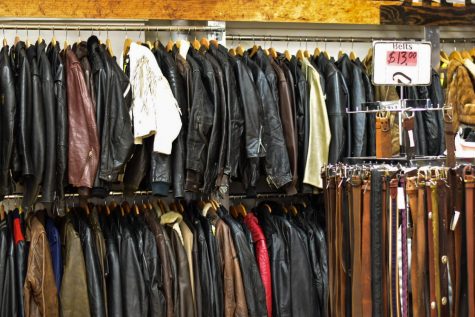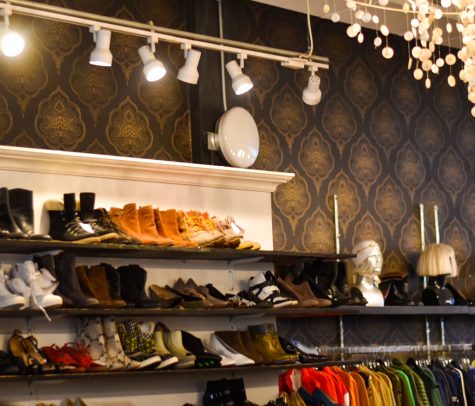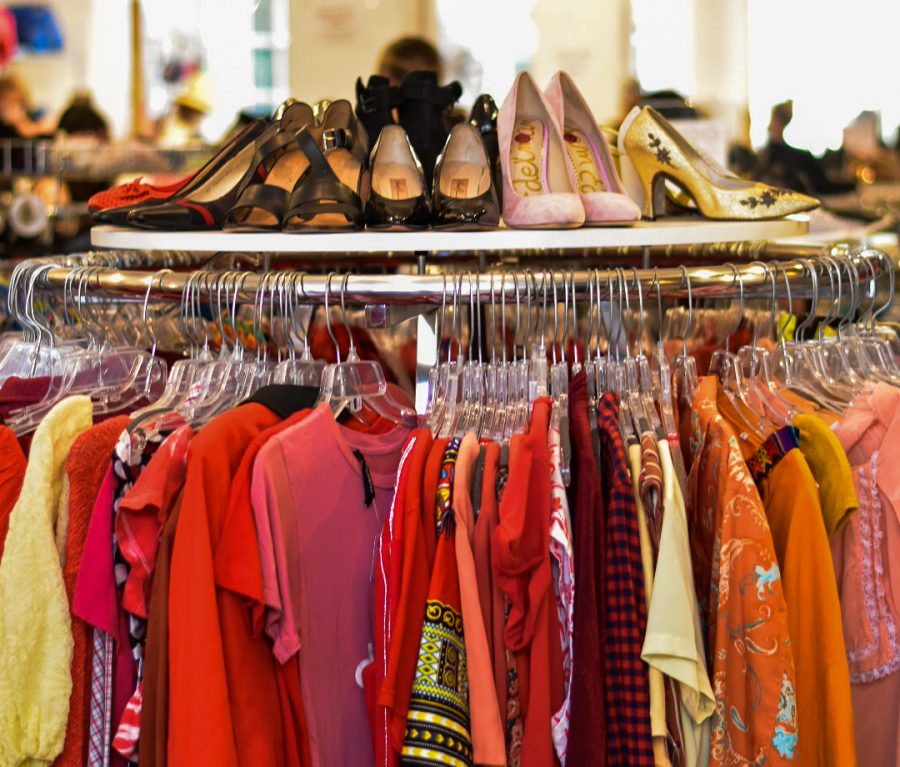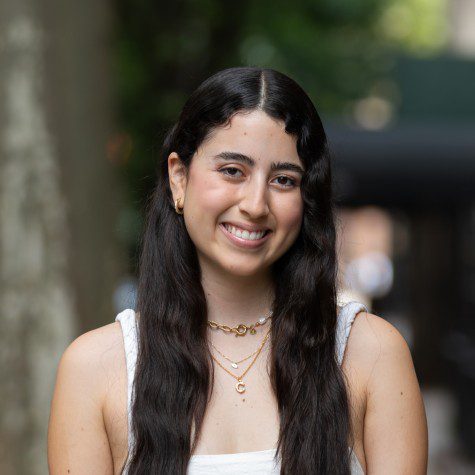How to dress more sustainably
Everything you need to know to step up your style in a sustainable fashion.
Shopping at thrift stores, such as Beacon’s Closet, is a good way to practice sustainability. It is important to make conscious shopping choices in order to contribute to collective change in the fashion industry. (Photo by Camila Ceballos)
September 27, 2021
While you might think your outfit only affects you, the truth is that the fashion industry — and, by extension, your fashion — has a direct impact on human rights and the environment. With that in mind, here are some ways to start your journey toward more sustainable fashion.
Get educated
In order to buy more sustainably, it is necessary to understand the difference between sustainable fashion and fast fashion. Fast fashion companies use a business model that responds to high consumer demand by mass-producing clothes. But their speedy production process has detrimental effects: Water resources are strained and workers earn poverty wages of around $300 for a 60-hour work week. Apps such as Good on You educate customers by rating global brands based on labor practices, environmental impact and animal treatment. Good on You also contains articles about sustainable fashion practices and recommends alternatives to poorly rated fast-fashion brands such as Shein or Fashion Nova. If scrolling through an app isn’t your thing, documentaries such as “The True Cost” also expose the harsh reality of the clothing industry’s global impacts.

Thrift
Some view thrifting negatively because there’s a misconception that secondhand clothes are damaged or dirty. However, the clothes are usually in good condition and, regardless of how thrifty the prices may actually be at many New York City thrift shops, it is more sustainable to buy garments secondhand than new. Don’t forget to wash the clothes you buy before wearing them, of course. You can also donate old clothes or clothes you don’t wear often to a thrift shop rather than throwing them away.
One of the best thrift shop locations in the city is Beacon’s Closet. Located on 12th Street, this trendy shop is relatively cheap and has an amazing variety of quality shoes, jackets, accessories and more. Other honorable mentions include L Train Vintage and AuH20 Thriftique owned by NYU alum Kate Goldwater.
Question your purchases
Shopping has become a mindlessly thrilling sport for many, including myself. In order to buy more sustainably, though, we need to put more thought into each purchase. Livia Firth’s “#30Wears” test can be utilized to buy less in a more conscious way: When purchasing an item, consider whether it will be used a minimum of 30 times. If the item doesn’t pass this test, then it’s probably not a sustainable and worthwhile purchase.
Reuse and repurpose
Most people have an item in their closet that they have only worn once. This type of neglect is the direct consequence of pop culture’s criticism of repeating outfits. But if Kate Middleton, the Duchess of Cambridge herself, encourages repeating outfits, it’s fine for anyone. It is simply not sustainable to wear an item only once, or even once a year. On the same note, mending clothes by hand or by taking them to a tailor is a great way to make your garments last longer.

In order to be more sustainable in fashion we must shop consciously, which involves buying fewer items and being more informed about the practices of the businesses you’re buying from. Don’t get me wrong, it’s a privilege to shop sustainably — not everyone has the money to buy from brands that prioritize the environment. But it never hurts to thrift or educate yourself. Independent choices contribute to collective change — change that the fashion industry desperately needs.
A version of this article appeared in the Monday, September 27, 2021, e-print edition. Contact the Camila Ceballos at [email protected].

























































































































































